By Martin K.A. Morgan
The vast Soviet War Memorial in Berlin’s Treptower Park commemorates 5,000 Red Army soldiers who fell in battle in the city in April and May 1945. With a monumental architectural style typical among Soviet memorials, the park is enclosed by imposing stone entrance portals ornamented with the hammer and sickle. These direct visitors along paths leading to a statue representing Mother Russia and then on to a pair of massive eaves made of red Carrara marble recovered from the ruins of Hitler’s Reich Chancellery.
There, a pair of giant statues depicting highly decorated Red Army soldiers on bended knee bow their heads reverently at the top of a set of stairs leading down to the main memorial promenade. On this level, an immaculately manicured garden is flanked by 16 granite sarcophagi representing the 16 Soviet Republics—each of which presents heavily idealized scenes from the Great Patriotic War in half relief.
At the end of this promenade, the memorial’s final feature is a 30-foot-tall mound on the top of which sits a pedestal and one final triumphal statue. Rising 36 feet, this statue depicts a Soviet soldier standing on a shattered swastika—a symbol of the complete destruction of National Socialist Germany. His right hand clutches a sword, and in his left he holds a child.
Dedicated on May 8, 1949, the Soviet War Memorial in Treptower Park is a perfect example of the kind of monumental state architecture the Soviet Union produced to memorialize its role in World War II. To the casual visitor, though, the statue of the triumphant Soviet soldier protecting an innocent child would leave the impression that the Red Army fought World War II as a benevolent force of compassion and justice. The truth behind that image is much more complicated and, in certain respects, much less attractive.
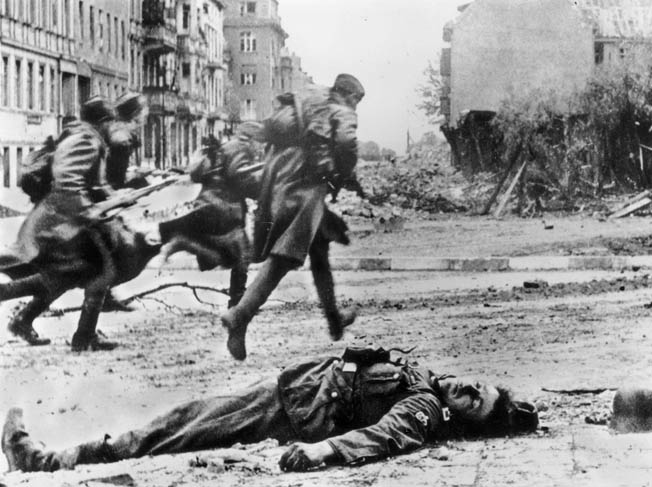
Fire For Fire, Blood For Blood, Death For Death
In reality, the victorious Red Army committed a staggering number of unspeakable criminal acts during and after World War II. As a part of the ceaseless campaigning and unrelenting combat against the forces of fascism, Soviet soldiers explored the abyss of humanity’s darker side in countless destructive and violent acts against Polish, Romanian, Hungarian, and (of course) German victims. In a rampaging spree of looting, rape, and murder that went far beyond simple collateral damage, Stalin’s legions did what they did in retribution for the vicious war that had been waged against the Soviet Union starting in 1941.
One anonymous Russian soldier announced this sentiment with chilling directness when he wrote these words in a 1945 letter home: “We are taking revenge for everything, and our revenge is just. Fire for fire, blood for blood, death for death.” Clearly, the soldiers of the Great Patriotic War rationalized their crimes as “just” acts against an anonymous foe. They employed a euphemistic vocabulary provided by the Soviet state propaganda machine to express a vengeful righteousness justifying each and every cruelty. But did revenge alone drive the Red Army to commit these crimes? Or did other factors give birth to the impulse to carry out such abominable excesses?
The intense brutality that so closely characterized the Soviet Army during and after World War II has been examined in a number of recent books. Published since the collapse of the Soviet Union in 1991 and the commensurate opening of former Soviet archives, these studies reveal how a diverse set of motivations drove the Red Army’s violence and destructiveness.
Although revenge certainly motivated soldiers’ actions to an extent, the actuality behind these episodes is that looting became a mass epidemic because the culture of shortage created by the catastrophe of forced collectivization and the failure of the NEP in Soviet Russia produced Stalinist subjects who sought every opportunity for self-aggrandizement and individual enrichment. While the massive number of crimes of sexual coercion can certainly be explained in part as being the expression of a vengeful impulse, other factors such as the abundance of alcohol in conquered territory, the absence of field brothels in the Red Army, and the deep sexual repression promoted endlessly by the Stalinist Soviet state also offer accurate explanation.
Beyond those influencing factors, the fact that Soviet troops also looted, raped, and murdered non-Germans suggests that revenge alone did not drive the Red Army to do what it did.
Conflicting Records of War Crimes
Because of the very nature of these war crimes, official documents barely recorded the Red Army’s lawlessness during and after the war. With scarce records defining the contours of these criminal excesses, personal accounts have been a leading tool for bringing the story into focus. The authors who have written on this subject have all used these accounts to define a story that the Soviets wanted to keep quiet because of the negative pall it cast on the soldiers of the Great Patriotic War.
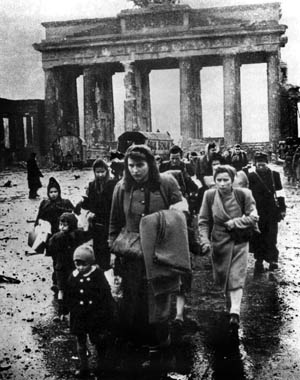
But for many of the men and women who would ultimately be a part of the Soviet Union’s military, personal recollections of their wartime service inevitably touched on these uncomfortable subjects. While they remembered the German invasion in 1941, they remembered it in conflicting ways. One soldier recalled that “German field units did not engage in any particular abuses,” but that rear-echelon units “were abominable.”
A surprising number of Russians remembered a German Army that punished individual looting severely and that had officers who, as a rule, did not participate in “wholesale” looting. Families even willingly allowed them in to stay in their homes for this specific reason. Naturally, there were cases soon after the invasion where Germans “confiscated” wristwatches, but because of the abject poverty of Soviet subjects, these cases did not reach wholesale proportions.
For many Soviet subjects who endured the misery of forced collectivization and the shortages of material goods it created, the invading German Army of 1941 could be seen as a force of liberation—at least initially. But for all of the descriptions of a Wehrmacht that behaved benevolently on Soviet soil, others recalled looting that went “uncontrolled and unpunished” in a campaign that “was a purely practical, military affair, outright.” In September 1943, as the German military retreated out of conquered Soviet territory, a 23-year-old Russian Normirovshchik (factory official) described how they evacuated civilians, “burning and looting at the same time.”
“Everything is on Fire”
Eventually though, the Russians brought the war back to German soil and the Red Army began doing what the Wehrmacht had done to their homeland earlier in the war. In January 1945, Soviet forces launched the Vistula–Oder Offensive with a push westward into East Prussia, East Pomerania, and Upper and Lower Silesia. As they did so, the soldiers of the Great Patriotic War came into contact with German civilians for the first time. Accustomed to the scarcity that had become such a central characteristic of life in the Stalinist Soviet Union, the material wealth that they found there seemed nothing less than a world of abundance and plenty. When the search for war booty began, it was carried out mostly by individuals “who wanted to live well, liked to loot, or wanted to make the most of their situation.”
Here, looting begins to resemble one of the “coping mechanisms” identified by Sovietologist Sheila Fitzpatrick in her 1999 book, Everyday Stalinism. In this work, Fitzpatrick closely detailed the experience of life in Russia during the 1930s when the state-run economy had chronically failed to supply the people with the necessities of life. Fitzpatrick even borrowed from anthropology when she identified the term Homo sovieticus to refer to the special breed of ordinary people who were profoundly shaped by the economy of shortage.
To her, Homo sovieticus was a wholly self-interested actor ruled by the overpowering desire to improve his personal living conditions. As the Red Army moved into Germany in 1945, Homo sovieticus was about to take looting to a level worse than anything anyone had ever seen.
When the 8th Guards Army attacked Schwerin, the capital city of Mecklenburg-Vorpommern, novelist and war correspondent Vasily Grossman wrote in his notebook: “Everything is on fire…. An old woman jumps from a window in a burning building…. Looting is going on…. It’s light during the night because everything is ablaze.” Despite the fact that he personally observed looting, Grossman nevertheless believed that it was the rear-echelon soldiers who were responsible for the debauchery. He believed that the frontoviki—frontline soldiers—“advancing day and night under fire, with pure and saintly hearts” could not commit such crimes.
In reality, the frontoviki—along with everyone else who made it to the West—participated in the quest for war trophies. Of the 12.8 million men and women in the Soviet military in 1945, only 10 percent set foot on German or Austrian soil to participate in the outburst of looting. Although this percentage represented only a small proportion of the Red Army’s total strength, it was nevertheless responsible for massive looting. The leniency and frequent cooperation of higher authority only made things worse. Although Stalin described the NKVD (People’s Commissariat of Internal Affairs) regiments that moved forward with the tactical fighting units as a “gendarmerie” (military police force), they rarely intervened in the lawlessness.
“Trophy Goods” For Mother Russia
In addition to its lack of intervention, the Soviet government also officially sanctioned the appropriation of “trophy goods” by its troops. As demobilized Red Army soldiers returned home during the summer of 1945, they were required to pass through customs controls. To avoid declaring their plunder at the border, they began selling everything off in Poland before crossing back into the USSR. Details of this situation reached Stalin that summer in a report emphasizing the fact that the current customs requirements benefited “speculators of Polish border towns” and not returning Soviet soldiers. A resolution dated June 14, 1945, corrected the situation by lifting the customs controls on returning Red Army troops, thereby opening the flood gates for “trophy goods” to flow into Mother Russia. The looted property that subsequently entered the Soviet Union in immeasurable volume included watches, motorcycles, pianos, radios, furniture, paintings, cloth, and gold. This ruling remained in effect through 1949, ensuring that plunder would flow eastward in great profusion for many years to come.
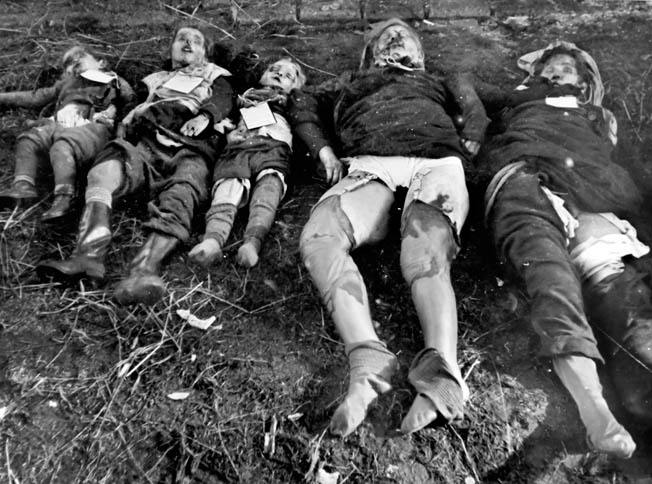
Special demobilization train No. 45780 is a perfect example of the extreme to which this situation could be taken. The train traveled from Vienna to Uzbekistan in September 1945 carrying demobilized veterans and an abundance of loot from the occupied West. One officer on the train brought more than 2,000 pounds of “luggage” while one of the enlisted soldiers had a “large number of suitcases and bags” in addition to dozens of gold watches worn on both of his arms.
To explain why he was wearing all these watches, the soldier said, “It is more secure to have them on the arms because the suitcases might get stolen.”
As it turns out, Homo sovieticus could loot a comrade just as easily as he had looted an Austrian civilian. With each trainload of returning Red Army veterans, a trainload of “trophy goods” from the West flowed into Uzbekistan. Those “trophy goods” quickly ended up for sale because, upon returning to the culture of scarcity at home, demobilized Uzbek veterans had to begin exchanging their “trophy goods” for the material necessities of civilian life. This situation meant that the markets in Tashkent in the Soviet Far East were as full of “foreign things” in 1945 as the markets in Moscow.
Lawlessness at Home
Soviet veterans did not leave their lawless impulses behind once they departed occupied territory. In December 1945, a train full of wounded and sick soldiers departed Germany on its way to Novosobirsk in Siberia. While on a station stop along the way in Poland, some of the veterans left the train, beat up the stationmaster, and then raped his wife and daughter. When the Polish Army attempted to arrest them, they fought back and escaped back to the train, which then departed on its continuing journey to the East. When it returned to Russian soil soon thereafter, the thugs continued to behave exactly as they had on foreign soil.
A few days later, at the station in Kropacevo, Chelyabinskaya Oblast, in the southern Urals, the same troops got into more trouble. There they broke into a shop near the station, kicked out the salespeople, and proceeded to steal 7,000 rubles and five gallons of vodka. They then scampered back onto their train just as it departed the station, once again making a successful escape. Authorities ultimately caught up to the perpetrators at another station farther down the line and made 22 arrests. The investigation that followed revealed the string of crimes that followed the train’s route all the way home. In addition to what they had done in Poland and at Kropacevo, these same criminals had committed 30 robberies on the train and even raped a nurse serving on it.
The Soviet government that had encouraged lawless behavior in the occupied territories now had to deal with the monster it had created in the form of violent and criminally mischievous returnees. The fact that demobilized Red Army soldiers continued to behave as a lawless rabble on Russian soil can probably be explained by the mixed and confusing signals they received. At one time, the government exhorted them to follow a lawful code; at another time, the government looked the other way.
Mixed Signals From the Soviet Government
The failure of Soviet authorities to intervene in the face of widespread looting and other crimes stands in contrast with the government’s repeated attempts to promote responsible and appropriate behavior outside the Soviet Union. On entering Poland in 1944, a Red Army officer recalled being told that they were doing so as “liberators” and that looting and rape would not be tolerated. A 26-year-old kolkhoznik and Army veteran who remained in Germany after demobilization to work as a shoemaker was required to take an oath swearing to conduct himself “properly” and “obey the authorities” at all times. In this oath, he also had to pledge that he would not loot. The soldiers simply ignored the state’s exhortations and went on with the looting.
The image that emerges here of a Soviet government unable to control its people or enforce law and order does not look like the monolithic, all-powerful police state presented in the totalitarian/traditionalist model of Sovietology that flourished throughout much of the Cold War. Instead, the revisionist approach, with its emphasis on the individual agency of independent actors working within the Soviet system in pursuit of self-enrichment, seems the more fitting explanation.
Rape and Alcohol
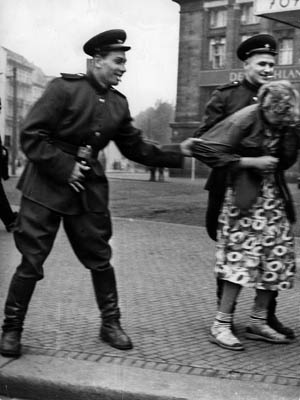
The Soviet government also sent mixed signals to the troops about the crime of rape—something the Stalinist government euphemistically referred to as an “immoral event.” Although the state actively repressed sexuality, those supposedly responsible for discipline actively turned a blind eye on sexual assault and permitted it to become as commonplace as looting. Whenever the Red Army handed out punishment in relation to a rape, the punishment was in response to a soldier contracting venereal disease—not the sexual assault itself.
Appropriate or officially sanctioned sexual expression scarcely existed in the modern Soviet state, driving sex underground for the average citizen. After all, the good socialist worker devoted his energies to production or reading Pravda, not to the bourgeois pursuit of sexual gratification. To the Stalinist dictatorship, even the Venus de Milo was deemed “pornographic.” This extremely repressive environment made Soviet troops, who were far from home and enduring the hardships of combat, a ticking time bomb. Also, unlike other armies of World War II, the Red Army did not condone the establishment of field brothels for its servicemen.
Their bottled-up sexual energy, therefore, exploded violently as soon as the opportunity of hapless victims presented itself. In this respect, the crime of rape became a collective experience for both the victims and the perpetrators. One Soviet report stated that the Red Army raped every German woman who remained behind in East Prussia—young and old alike. The same report indicated that Red Army soldiers typically raped women in gangs. According to the British historian Anthony Beevor, in the city of Schpaleiten, for example, a German woman named Emma Korn endured repeated sexual assaults at the hands of Russian troops: “On 3 February frontline troops of the Red Army entered the town. They came into the cellar where we were hiding and pointed their weapons at me and the other two women and ordered us into the yard. In the yard 12 soldiers in turn raped me. Other soldiers did the same to my two neighbours. The following night six drunken soldiers broke into our cellar and raped us in front of the children. On 5 February, three soldiers came, and on 6 February eight drunken soldiers also raped and beat us.”
After the war, a Ukrainian auto mechanic described one of these gang rapes as a scene where 20 well-armed officers and men carried out a sexual assault on a 14-year-old German girl in a single “indescribable,” alcohol-fueled attack.
The abundance of alcohol became a major factor wherever the Red Army went and contributed significantly to the epidemic scale of gang rape. As the war crossed into East Prussia, East Pomerania, and Upper and Lower Silesia, German military authorities made a critical error in judgment by choosing not to destroy stockpiles of alcohol in the approaching Red Army’s path. The rationale behind this decision held that widespread drunkenness would prevent the Soviets from fighting at their maximum strength, but the result was actually just tragedy.
In Germany, Red Army soldiers by the thousands found liquor in quantities beyond their wildest dreams and began drinking with gluttonous enthusiasm. Their mass consumption celebrated the end of a long, brutal war and also gave them the courage to break free from the intense sexual repression of Stalinist Soviet society. One anonymous diarist writing about the fall of Berlin many years later concluded that “if the Russians hadn’t found so much alcohol all over, half as many rapes would have taken place.”
A Mixture of Postwar Accounts
Although the volatile formula of sexual repression, lax discipline, and intoxicating spirits in plentiful supply produced “immoral events” on a shocking and unprecedented scale, many Soviet veterans denied the reports. One Red Army veteran remembered, “In the Russian Army of Liberation there was very little rape,” especially in his company, because they “all had girlfriends.” Another described relations with the “peasants” in his unit’s area as “on the whole good,” and that “rape, etc. were punished severely.”
Though such denials are easy to understand in terms of a veteran’s desire to ennoble his wartime service and downplay any possible connection to criminality, other personal accounts remember an entirely different Red Army. One describes an “extremely repulsive” Soviet major named Frolov who raped a 10-year-old girl in Warsaw. Another recalls how a daughter, mother, and grandmother were gang-raped together during the Battle of Berlin, and still another recalls a woman who “was raped by 23 soldiers, one after the other.”
The novelist and war correspondent Vasily Grossman even jotted down the chilling words, “Terrible things are happening to German women.” He also recounted the story of a young German mother who was being repeatedly gang raped in a farm shed by drunken soldiers. After hours of sexual assault, one of the woman’s relatives appeared at the shed’s door to plead with her rapists to give her a break so that she could breast feed her infant child because it would not stop crying. According to a neighbor’s letter, a 13-year-old boy in Berlin named Dieter Sahl “threw himself with flailing fists at a Russian who was raping his mother in front of him. He did not succeed in anything except getting himself shot.”
The stories reach an almost monotonous and ghastly infinity where each is more lurid than the one that preceded it, but they indicate the severity of the problem. The almost incomprehensible scale of that problem can only be presented in numbers. In Berlin alone, the city’s two main hospitals estimated that as many as 130,000 women had been raped there. One of the doctors dealing directly with the crisis believed that more than 10,000 of those victims had died.
Two Million Victims of the Soviet Army
One of the alarming consequences of this epidemic was a widespread wave of suicides. In Berlin and elsewhere in Germany, rape victims began to take their own lives by gunshot, ingestion of poison, slitting of the wrists, and hanging. In East Prussia, Pomerania, and Silesia, the number of victims of the Red Army’s “immoral action” soared to 1.4 million. Of the two million victims of the Soviet Army nationwide, almost half were thought to have endured multiple sexual assaults during the closing months of the war.
In terms of the overall scale of the crime, there was nothing like it elsewhere in Germany. Comparison to the “surprisingly high” incidence of rape in areas overrun by the U.S. Army was superficial at best. In terms of intensity and brutality, only French colonial troops from Morocco matched the Red Army’s rapacity. During the initial occupation of Baden and Württemburg, they subjected German women to the same indiscriminate sexual assaults seen in the East. Although the Soviet Union was not alone in committing sexual crimes against German women, it did so with a vastness unmatched elsewhere in World War II.
To be fair, the crime of rape is an all-too-familiar instrument of war that has accompanied conquest through the ages. The Red Army soldiers who conquered parts of Germany in 1945 did not invent this wretched form of misconduct—they just took it to an unprecedented level.
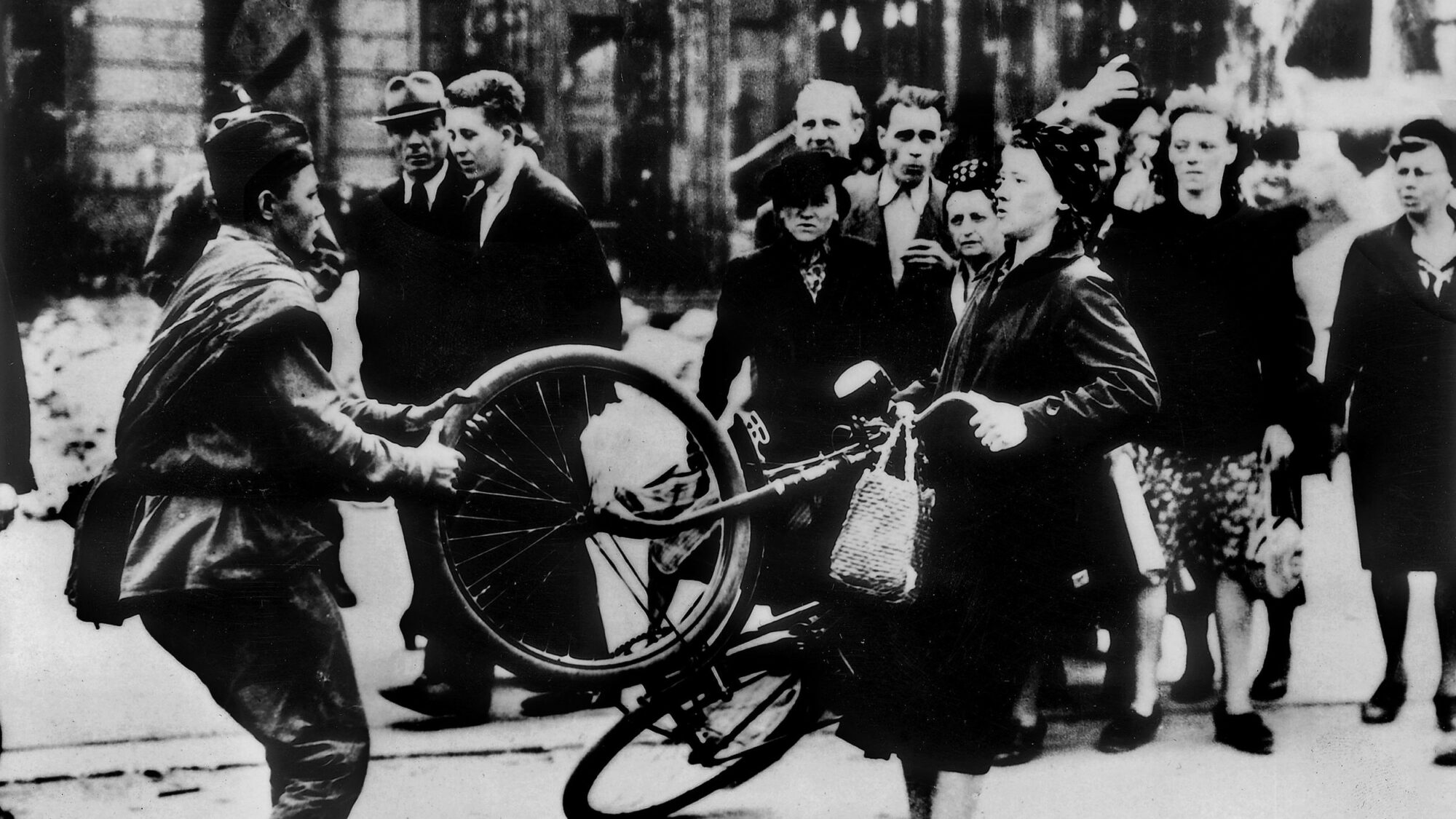
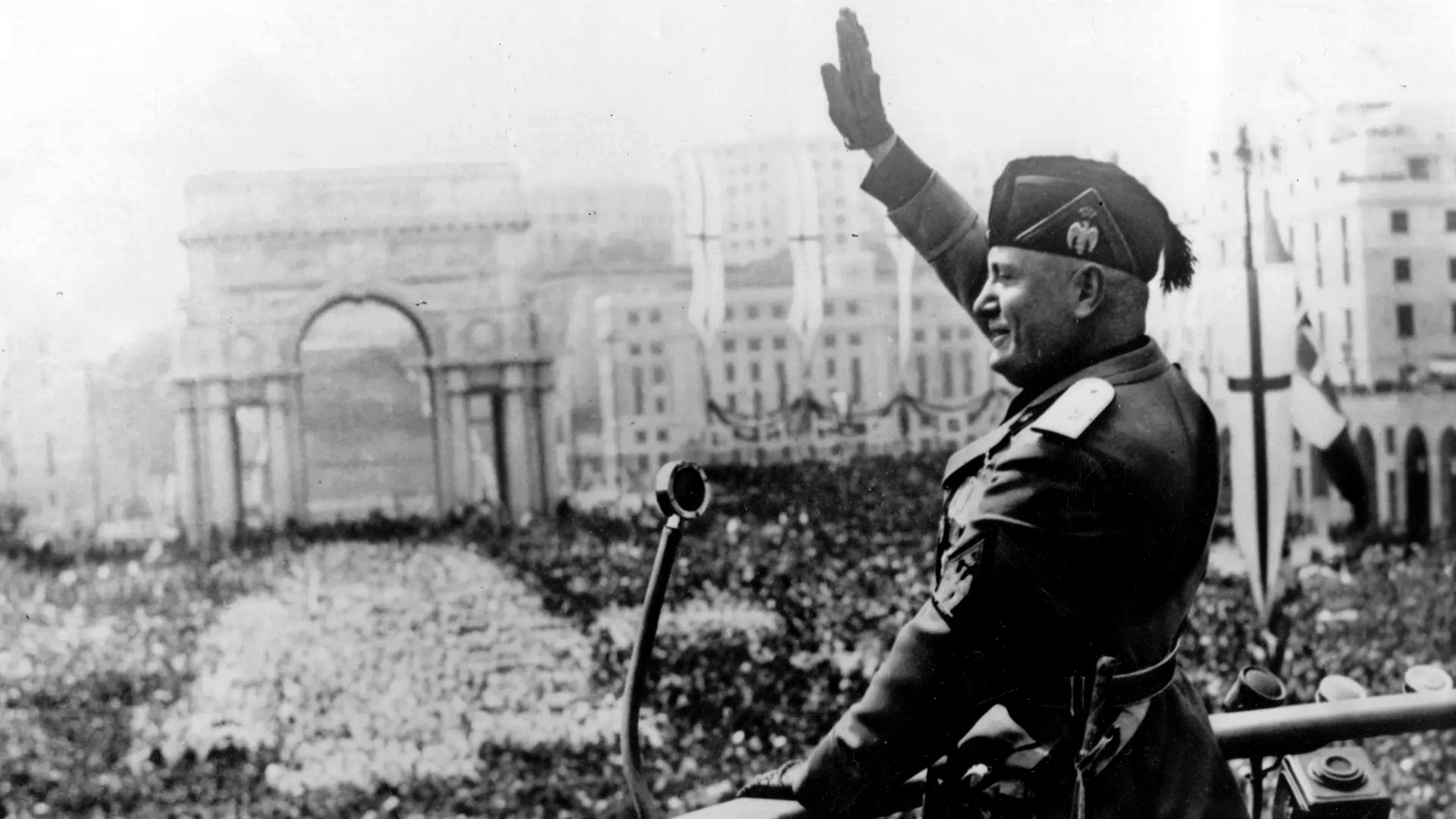
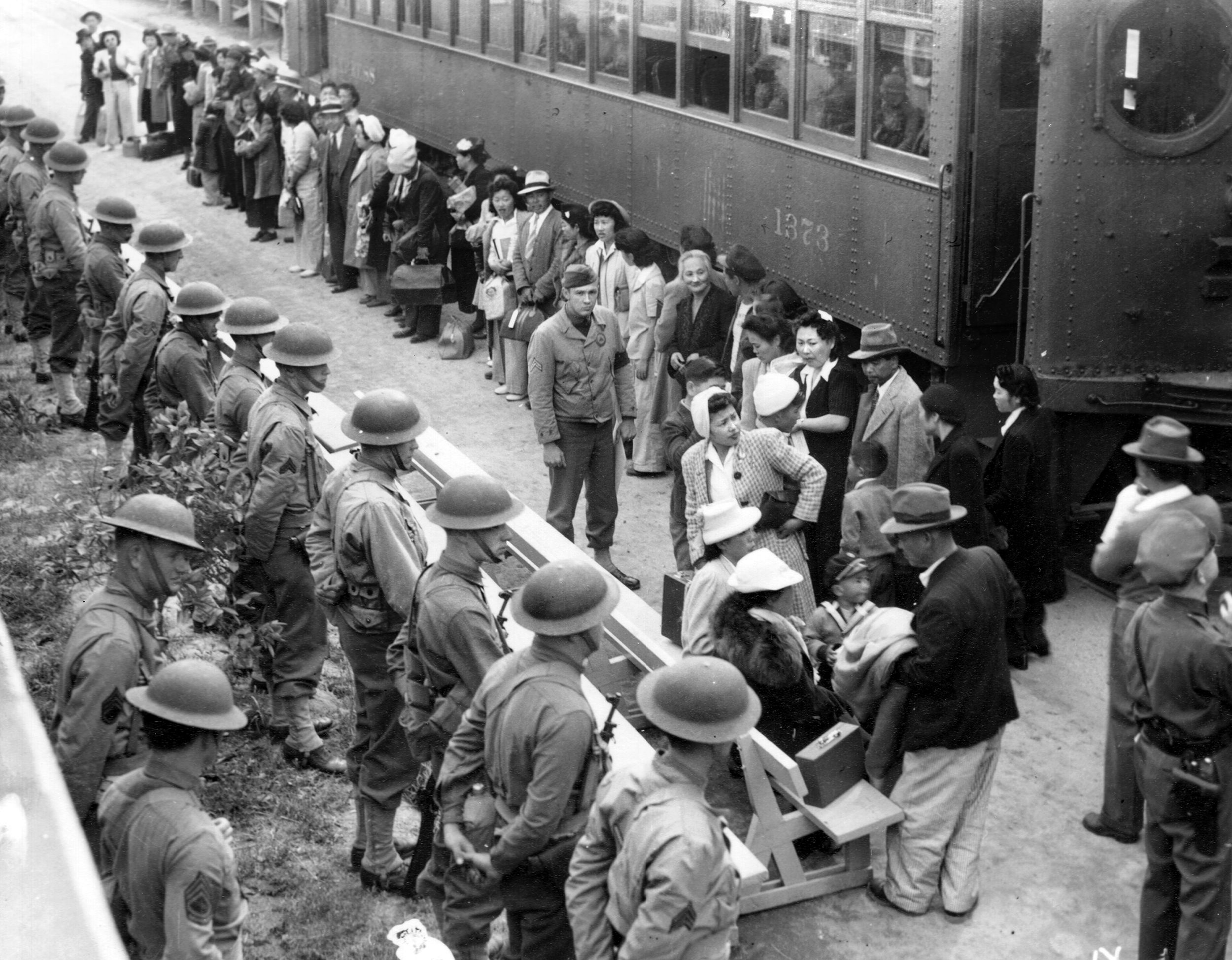
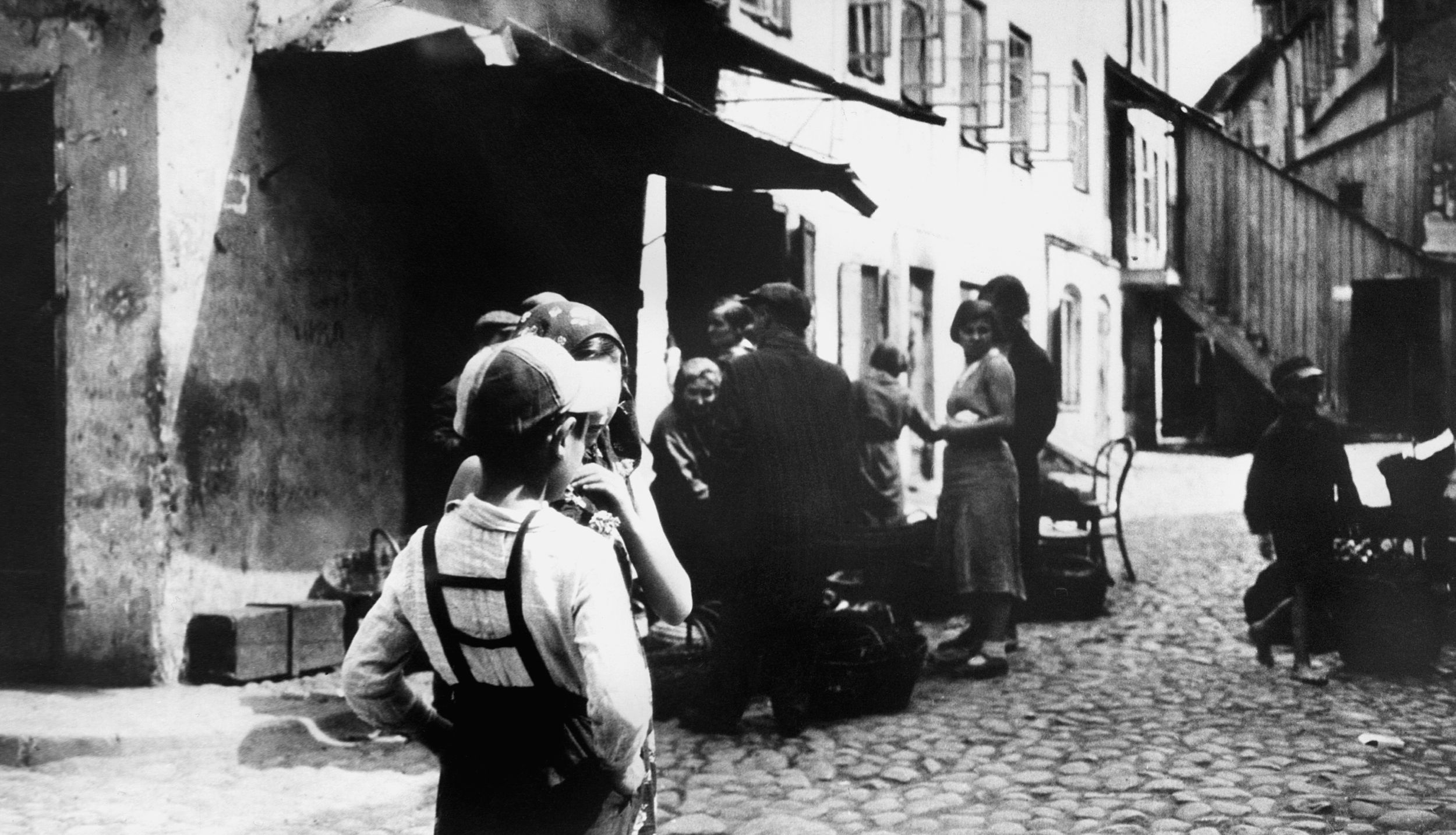
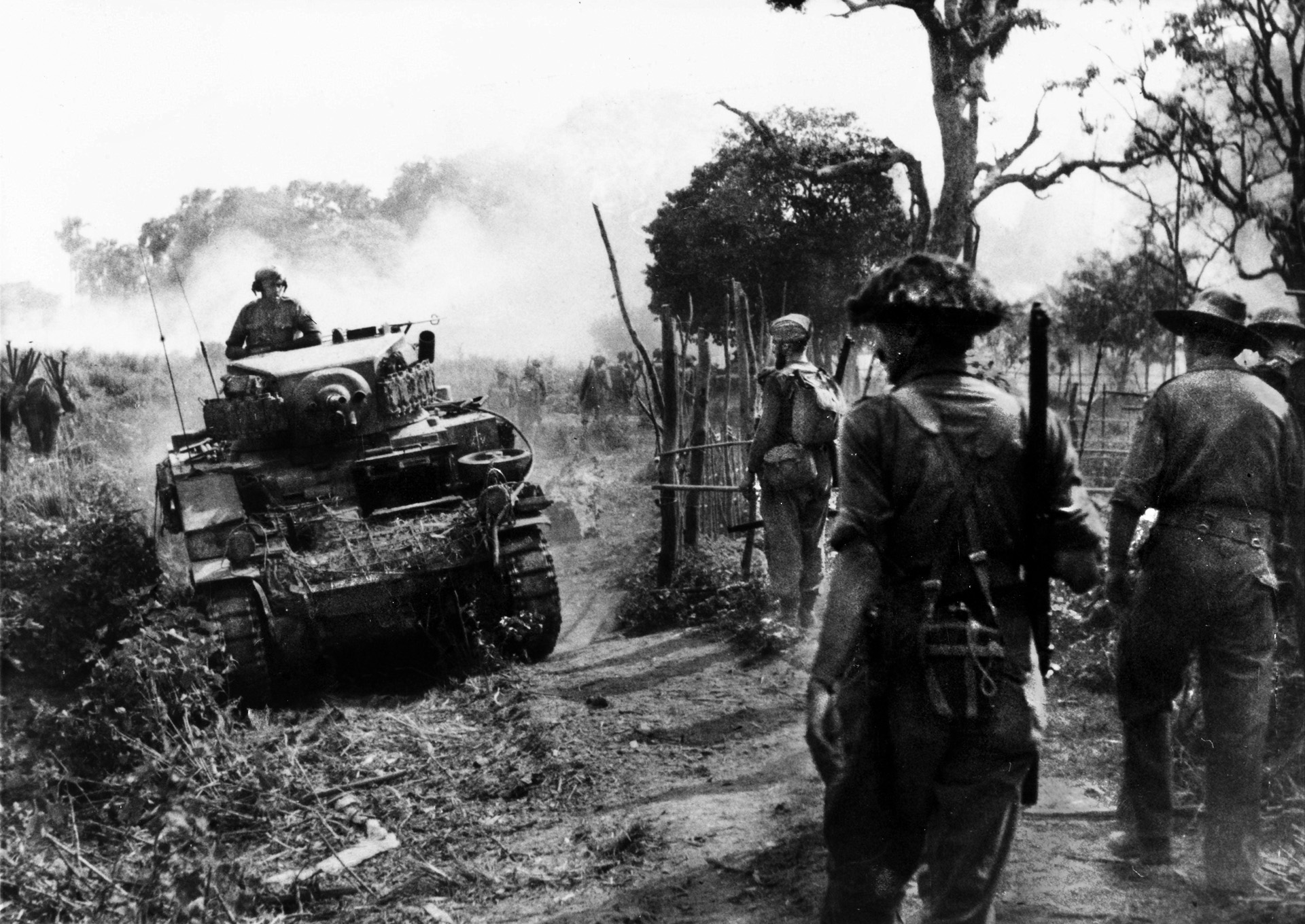
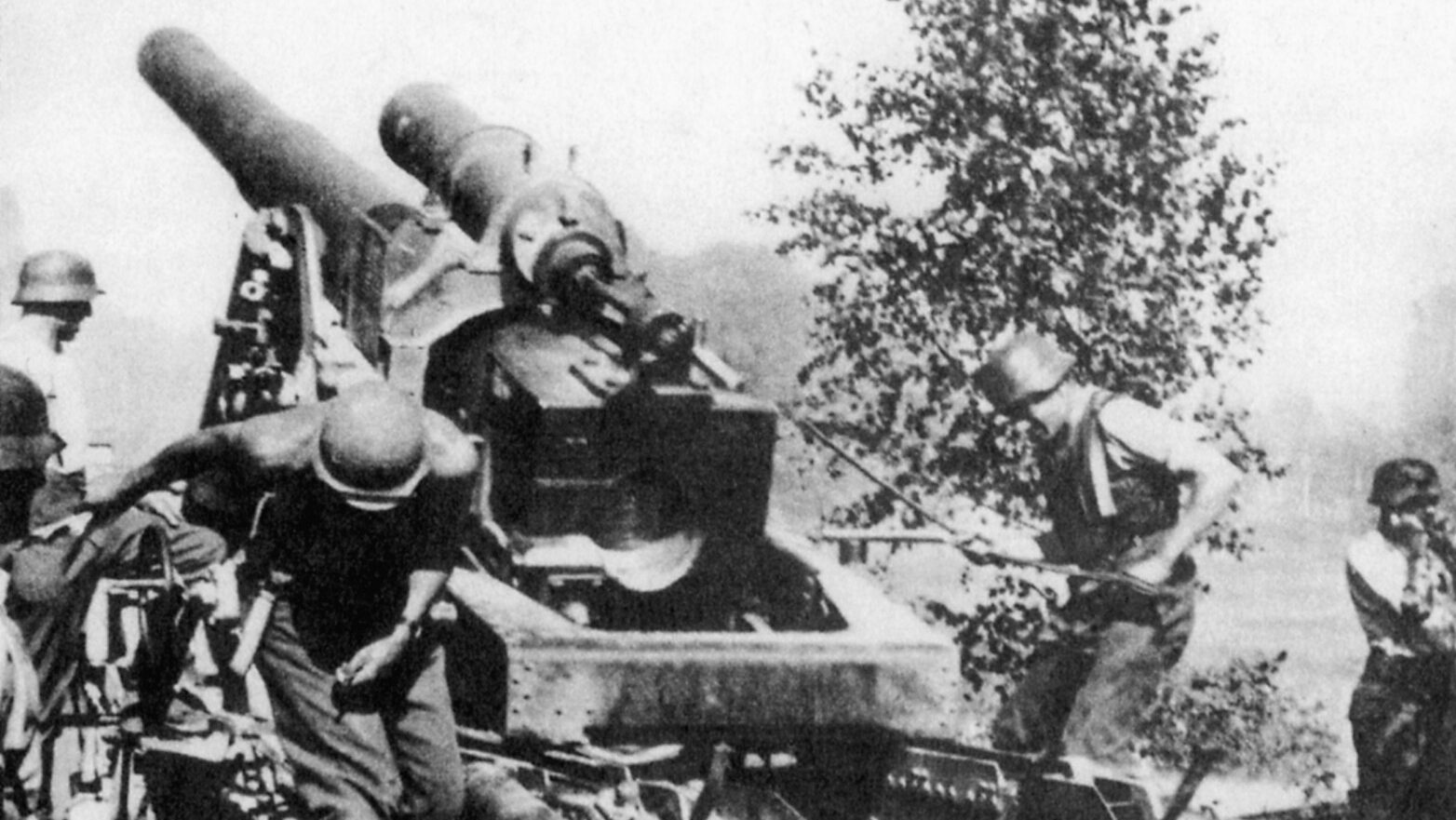
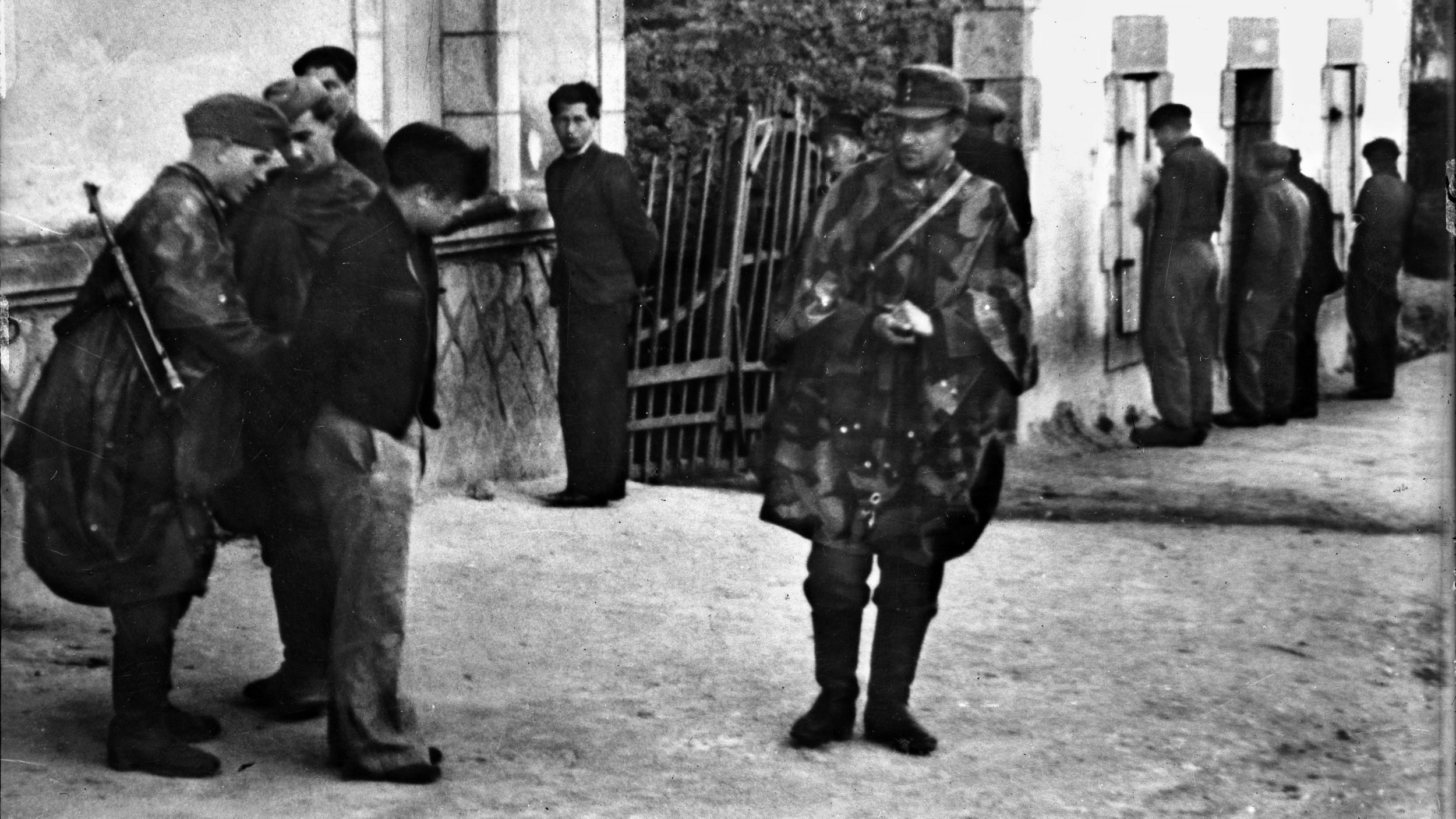

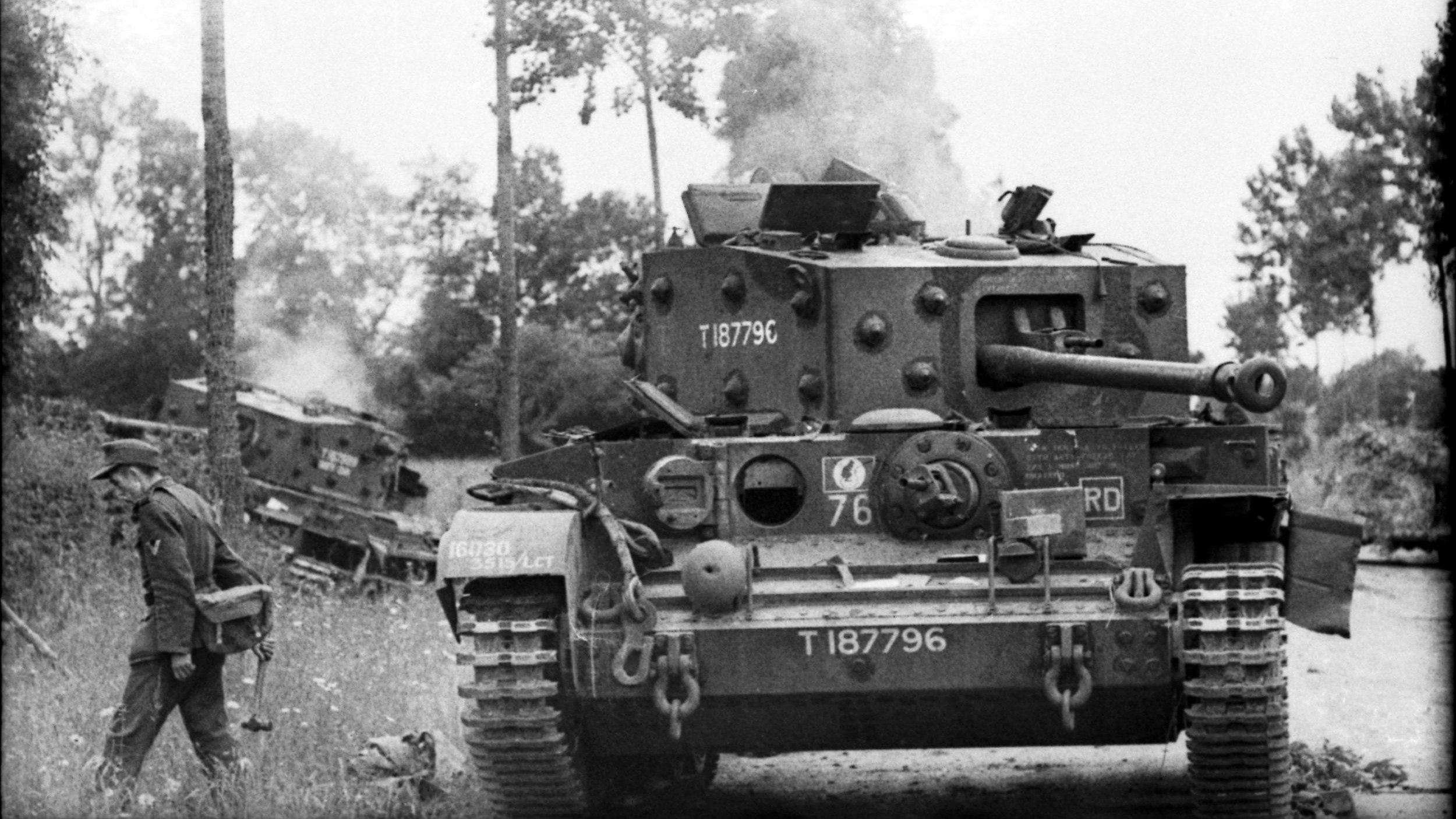
How did the Russian rapes compare with those of the Germans who were certainly no saints? Or for that matter, those of the Japanese with their heavily documented “rape of Nanking” and women in occupied territories being forced into forced duty as “comfort girls?”
All the Russians did was avenge their homeland, the Germans raped, murdered, and looted, when they invaded, why ain’t Mr. Morgan whining about that, another double standard, the Germans rode rough shot over everyone else, and they got what they had coming, eye for an eye, so there.
Mr. Morgan’s story covers the conduct of some Red Army soldiers. It was not intended to be a complete description of World War II atrocities – a subject that requires more than a few books. While wartime atrocities are not the main focus of our print magazines, or this website, we have provided coverage of this subject in a number of articles over the years, particularly the atrocities committed by the Nazis. You’ll find some of those on this website, including:
https://warfarehistorynetwork.com/2015/09/23/einsatzgruppen-in-germany-the-nazi-killing-squad/
https://warfarehistorynetwork.com/2018/12/29/irma-grese-the-blonde-beast-of-birkenau-and-belsen/
https://warfarehistorynetwork.com/2016/11/22/the-nuremberg-tribunal-otto-ohlendorf-and-the-einsatzgruppen-face-judgment/
https://warfarehistorynetwork.com/2015/07/31/the-assassination-of-reinhard-heydrich-the-butcher-of-prague/
Dear Mr. Williams, In replying to your allegations of Wehrmacht conduct in Russia, as you commented was the same as the Red Armies’ in Germany a strict act of ‘revenge’. Where do you get your information from?
Junk books? memoirs of former Soviet soldiers whose stories are heavily padded with official Soviet wartime propaganda. Even Soviet sniper Zaitsev falls into this category when in his book he claims the ‘fascists’ sent their dogs to attack Russian wounded! Give me a break! -dogs in Stalingrad a new one! May I also refer you to the hate propaganda writings of Illya Ehrenburg official Soviet propagandist. “Take the German women heroic Soviet soldiers break those high, mighty women have your rewaard”. no quite exact but Ehrenburgs’ writings are full of this type of rhetoric – you can order his books from Abe Books. Each German Wehrmacht soldier had in his possession his ‘Soldbuch’ in which all his particulars were recorded, clothing issues; combat actions, etc. Inside of the front page is a list of the 10 rules of conduct for the German soldier- violation of these rules resulted in serious charges punishment battalion, military prison and even concentration camp. Rape was one of the most serious charges and on occasion resulted in facing the firing squad. Why did ‘Ike Eisenhower ‘ who was no friend of the Germans still call the Wehrmacht soldiers the most disciplined among the Europeans combatants? Stalin’s Army had no rules of conduct whatsoever- the only two being follow orders of his superior officer and even when super hungover from drinking binges be ready to attack . Check references: many thousand Russian soldiers were executed by NKVD or security troops for these violations.
Certainly excesses did occur by Wehrmacht soldiers at times and were instructed to practice ‘ scorched earth’ policy by high command for one reason or another but the same was done on Russian soil by orders of Stalin/Stavka. That the Russian soldiers were angry at the ‘invader’ for the destruction of Russian property is understandable. The Red Army had a field day in east Prussia burning entire towns and villages just for fun or ‘revenge’ and murdering the inhabitants. Perhaps read up on the two towns Nemmersdorf and Goldap the first two towns the Red Army overran but were chased out by Germans forces For you to claim it is OK for the Red Army soldiers to rape a 12 year old girl to death after shooting her mother after the same treatment seems to me pretty callous- to me- comes maybe from watching great war movies like’ Inglorius Bastards’ or Fury etc. Even John Erickson, who has a great reputation from writing about about the Russian campaign includes many atrocity stories in his 2 Vol. books many pretty bizarre.! Incidentally on the title page of his books reads Smert Niemetz equals Death to the Germans! No bias there.
To conclude the German OKW German high command had authorized a commission which investigated
all reports sent in by field units where they discovered murdered German POWs, medical convoys, wiped out field hospitals etc. and there were thousands of these reports document with the names, locations, etc. The translated book of these reports is available in English and was compiled by a man by the name of Joachiminstaler(spelling may be off but I can’t find the book in my collection at the moment.- be happy to dig this book up for further information. The German veterans can’t reply to any of these allegations anymore because they have passed away. I walked through the Soviet war memorial in Berlin (Treptow) it is massive The many German visitors have been taught that Soviet soldiers liberated them- which they believe- but that is another story.
Mr Williams,
Im not answering you to defend anything of the horrors that laid the western Soviet Union in ruins by the nazi regime. The thing I see in your comment is that the type of revenge these individuals did should be acceptable and tolerated. Revenging by mutulating civilians just because they are on the wrong side of some border I would never ever see as acceptable. The atrocities committed during ww2 were unimaginable. For those of you even thinking of justify or tolerate atrocities by torturing and killing people for their, race, sex, religion as a mean of setteling a conflict, you are in truly deep waters.
Read The Fall of Berlin by Anthony Beevor for a well researched and factual reporting of the conduct of the Russian soldiers in Germany.
With the current events in Ukraine involving Russian
soldiers, it certainly looks as if nothing has changed.
Murder, looting and rape seems to be a Russian military trait.
It would be nice to see a comparison study of the conduct of the soldiers in these two wars, after the conclusion of hostilities in Ukraine.